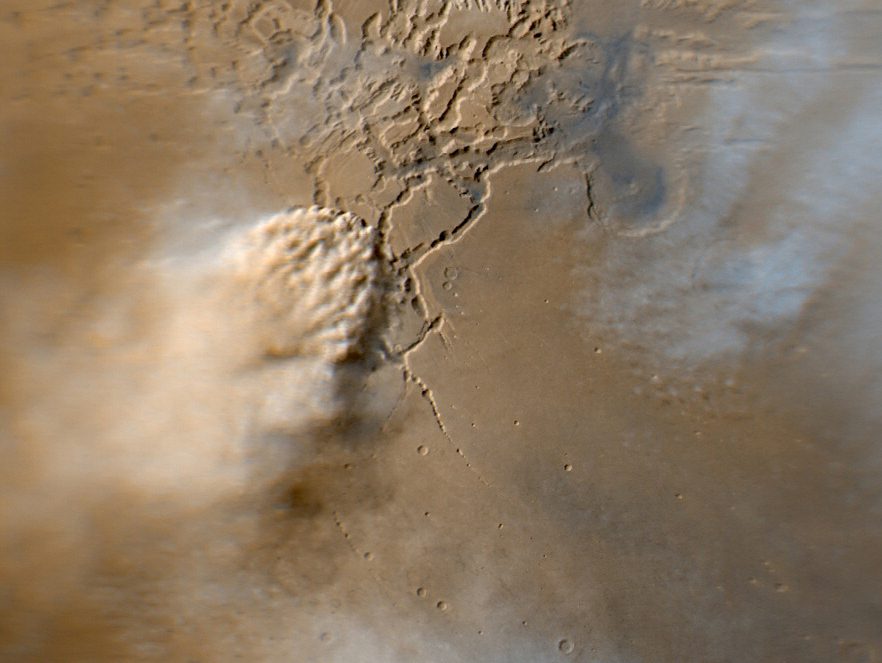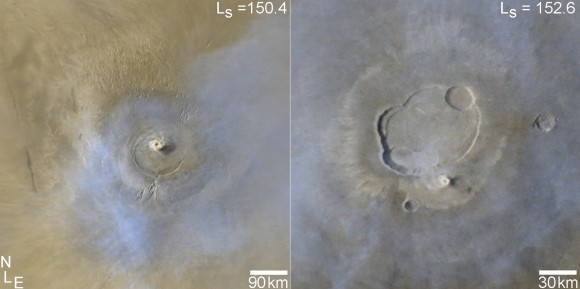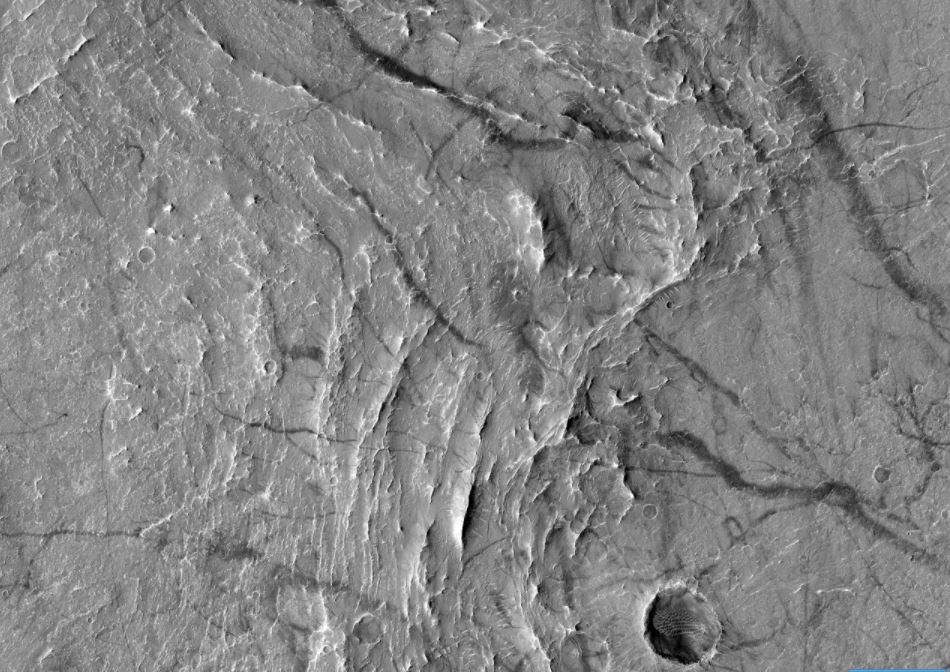[/caption] What an incredible image of a storm on Mars! The Mars Reconnaissance Orbiter's main assignment is to study the surface of the Red Planet, looking for clues about the history of water on Mars. But while photographing, analyzing and mapping, it also spends time each day pursuing intense weather on Mars. Sometimes, MRO is able to capture a storm in action, as in the above image of a dust front rising from a network of canyons. Often, the storms are spirals like giant tornadoes on Earth, sometimes forming huge fronts of churning dust like the "dust bowl" of the 1930s in the US. While we sometimes think of Mars as an almost "dead" world, there's a lot of action going on in the atmosphere, and MRO is always searching for the Perfect Storm!
Dust storms on Mars are catalysts for cloud formation. The storms lift dust particles high into the atmosphere, and the particles serve as seeds for water-ice cloud formation. Water ice condenses onto the dust particles to form wispy, white clouds. Daily variations in Mars' atmosphere are quite large, in part because there is no ocean, which serves as large heat storage capacity on the surface. The ground warms up quickly during the day and cools off equally as quick at night. Daily temperature variations of 100 C (180 F) are common, and that cycle of heating and cooling is reflected in atmospheric variations. "That energy propagates up, and when integrated to the high altitudes, it can make a big difference from day to night in the densities that we saw at a given altitude," said MRO Project Scientist Richard Zurek. [caption id="attachment_22725" align="aligncenter" width="580" caption="Storms as seen by the Mars Color Imager. Image credits: NASA/JPL-Caltech/MSSS "]
[/caption] These images show whirlwinds on top of volcanoes. Thin veils of icy clouds dissipate into the atmosphere above the dust plumes. The orbiter has discovered that smaller storms on Mars can feed into larger storms. [caption id="attachment_22726" align="aligncenter" width="500" caption="Dust devils seen by the HiRISE camera. Credit: NASA/JPL/University of Arizona "]
[/caption] And of course, dust devils on Mars are a common occurrence in several areas, as they have been
photographed by both the Mars Exploration Rovers,
as well as
Phoenix.
Sources: MRO website,
HiRISE site
 Universe Today
Universe Today


